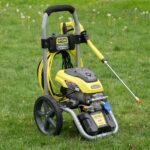Tuning a nitro RC car can seem daunting, but with a systematic approach, it’s manageable. This guide provides a step-by-step process for tuning your nitro engine for optimal performance, covering high-speed needle (HSN), low-speed needle (LSN), and idle screw adjustments.
Understanding Your Nitro Engine’s Needs
Before diving into tuning, it’s crucial to understand that your engine needs a specific air-fuel mixture for different throttle positions. The HSN controls the mixture at high speeds, the LSN manages low speeds and idle, and the idle screw sets the engine’s baseline RPM. A properly tuned engine translates to better performance, longer engine life, and a smoother running experience.
Tuning the High-Speed Needle (HSN)
The HSN dictates the fuel mixture when your RC car is at or near full throttle. Start with the factory settings, which are usually rich (more fuel than air). Gradually lean the mixture by turning the HSN clockwise in 1/8 increments. After each adjustment, perform a high-speed run on a straight track.
Observe the Smoke:
- Lots of smoke: The mixture is too rich. Continue leaning the HSN.
- Little to no smoke: The mixture might be too lean.
- Slight smoke trail: This often indicates a good mixture.
Performance Indicators:
- Increased speed with each adjustment: Continue leaning until the speed plateaus or decreases.
- Engine cuts out at high RPM: The mixture is too lean. Richen the mixture by turning the HSN counter-clockwise 1/8 of a turn.
- Sluggish performance and excessive smoke: The mixture is too rich.
Different glow plugs have different heat ranges. Choosing the right one can impact performance.
Tuning the Low-Speed Needle (LSN)
The LSN controls the fuel mixture from idle to about half throttle. This needle is more sensitive than the HSN, so make smaller adjustments (1/16 increments). After adjusting the HSN, perform several high-speed runs to clear out the engine before tuning the LSN.
Tuning Process:
- Accelerate for 5 seconds, then brake and let the engine idle.
- Repeat this process, observing acceleration and idle quality.
Indicators:
- Poor acceleration and excessive smoke: The mixture is too rich.
- Stalling or hesitation on acceleration: The mixture might be too lean. Richen the LSN slightly.
- Smooth acceleration with a light smoke trail: Indicates a well-tuned LSN.
Adjusting the Idle Screw
The idle screw adjusts the engine’s speed at idle. After tuning the HSN and LSN, adjust the idle screw to achieve a consistent idle without the wheels spinning.
- Wheels spinning at idle: The idle is too high. Turn the idle screw clockwise.
- Engine stalling at idle: The idle is too low. Turn the idle screw counter-clockwise.
Troubleshooting Common Problems
- Engine stalls on throttle: Check glow plug, idle setting, and LSN/HSN richness. Ensure the engine is warm.
- Engine runs hot: Consider a cooler glow plug, richen the mixture, or check for air leaks.
Final Thoughts on Tuning
Tuning your nitro RC car is an ongoing process. Weather conditions, fuel type, and driving style can affect engine performance and require adjustments. Patience and careful observation are key to achieving optimal performance. Remember to consult your engine’s manual for specific tuning recommendations. Regular maintenance, such as cleaning the air filter and after-run oil, will also contribute to a well-running engine.

